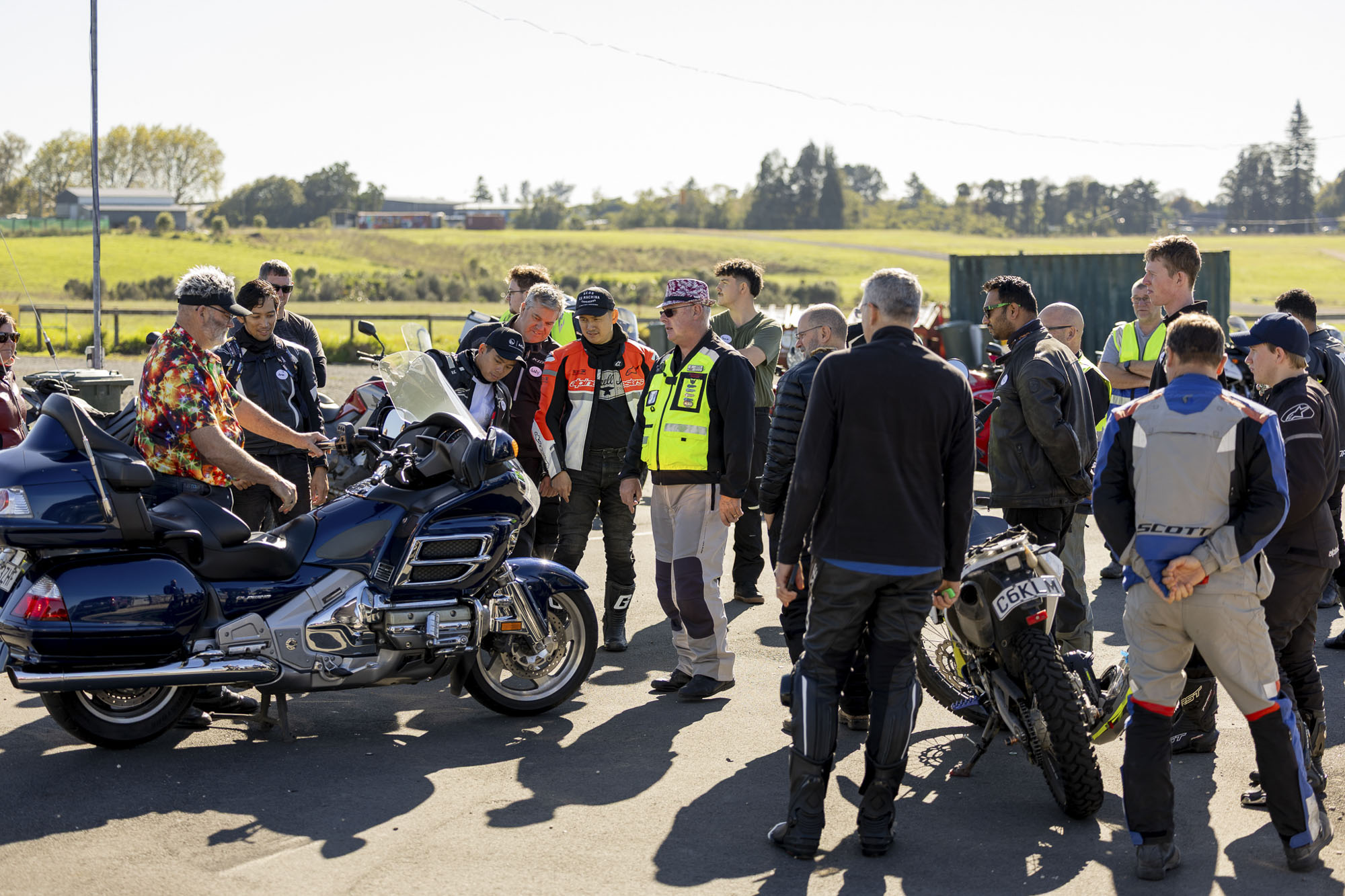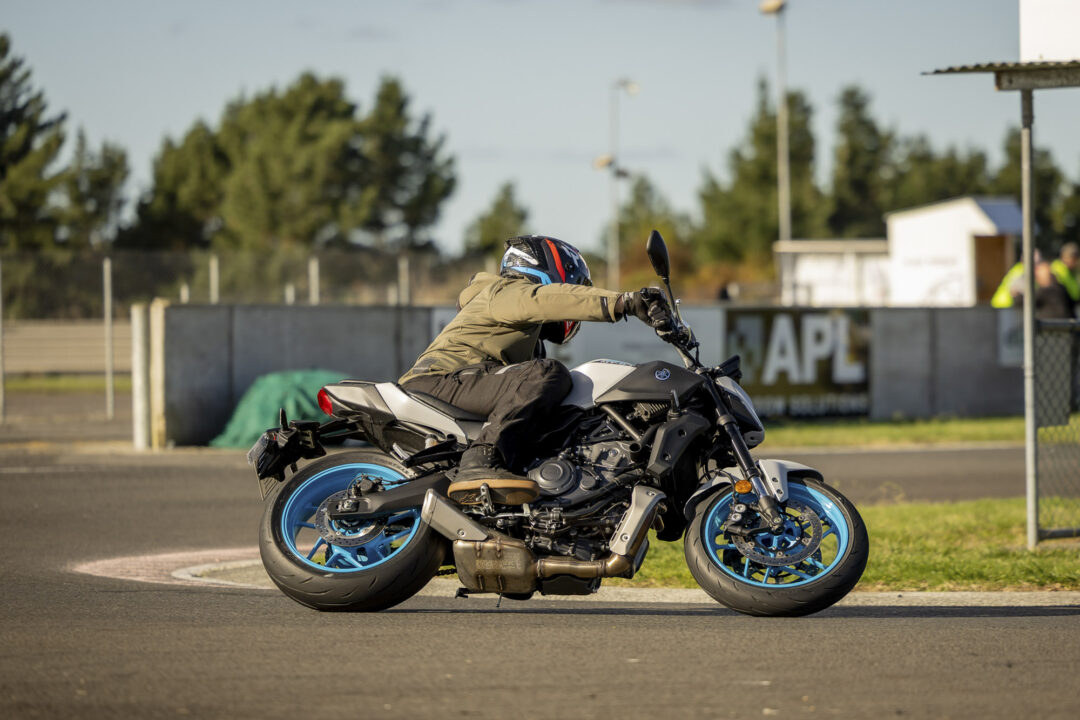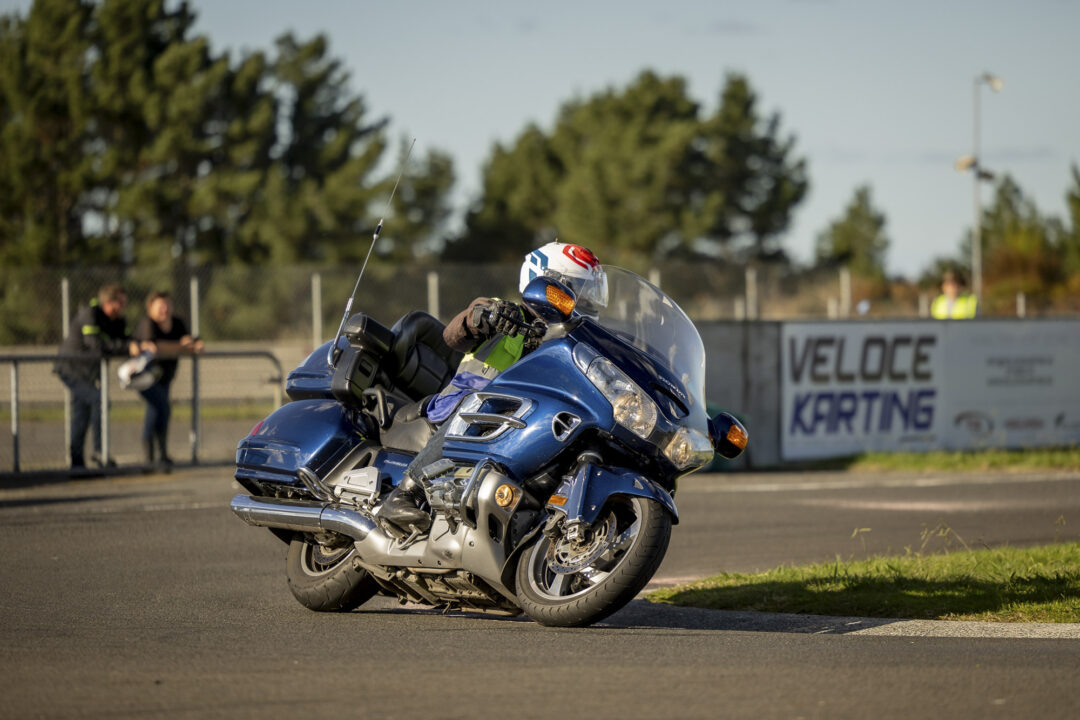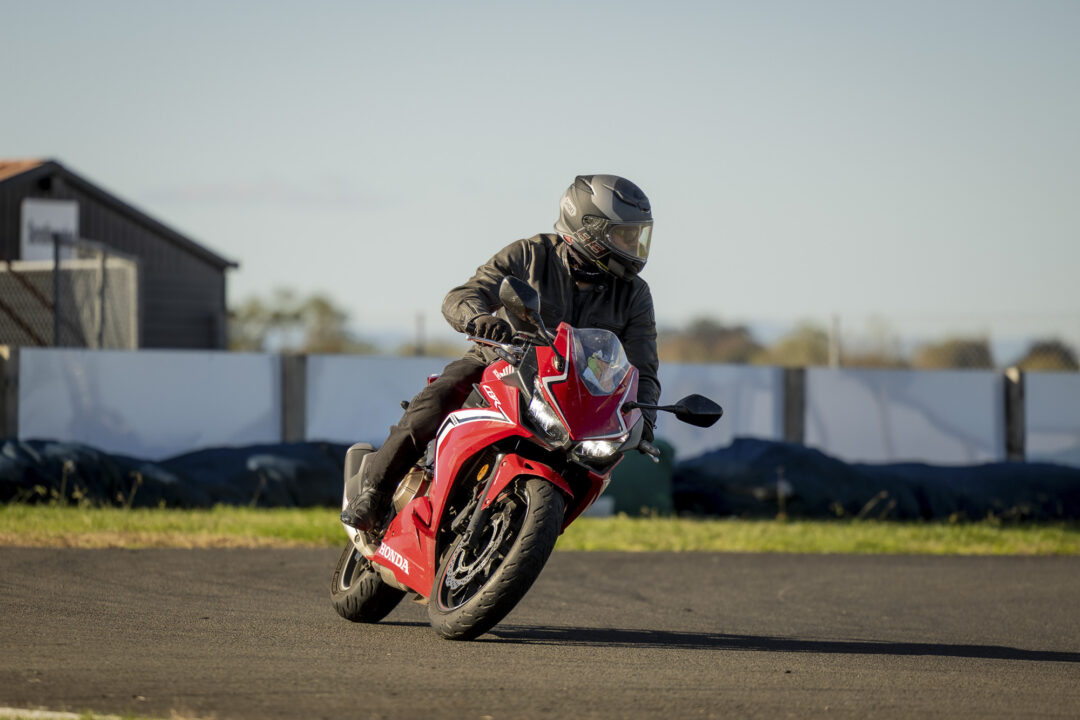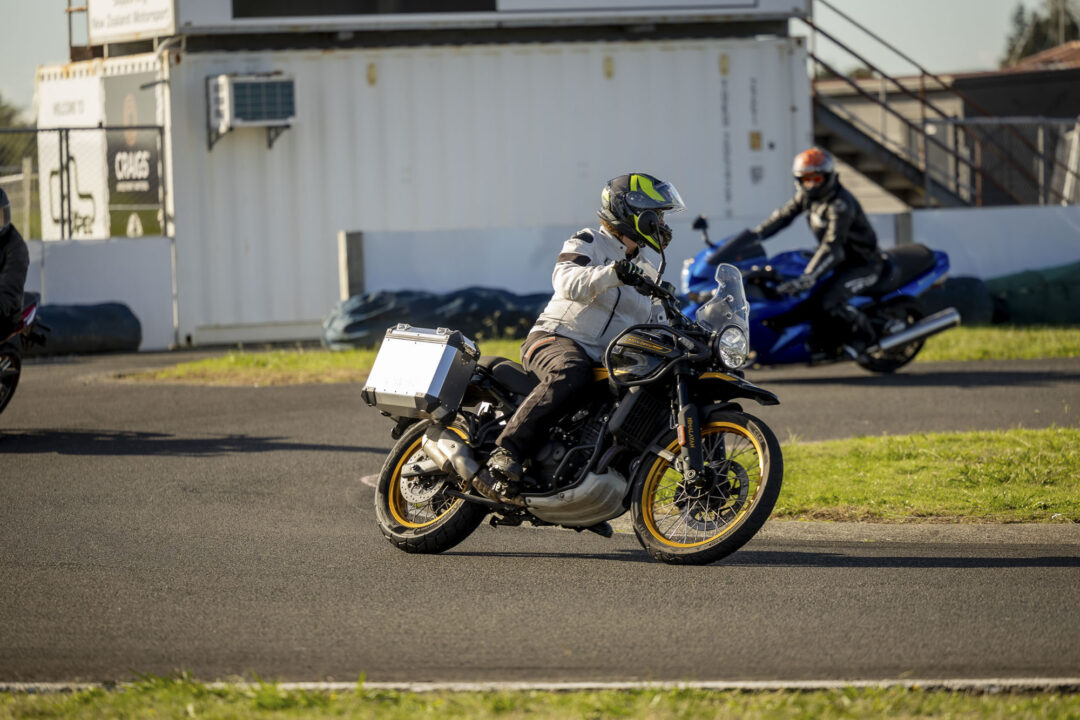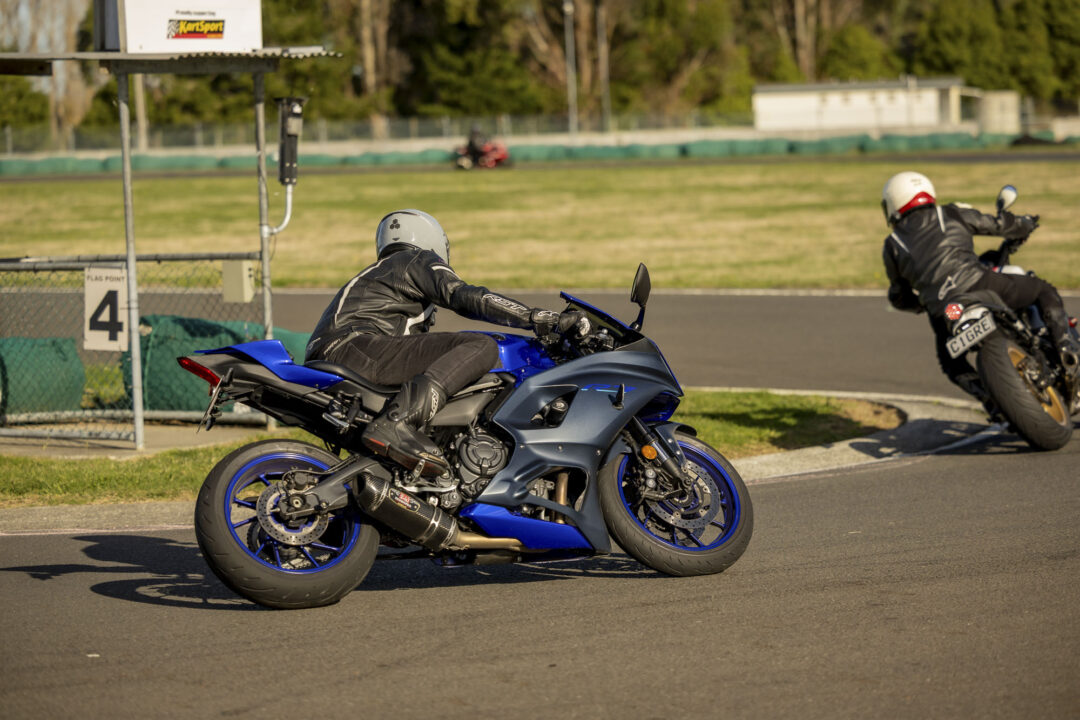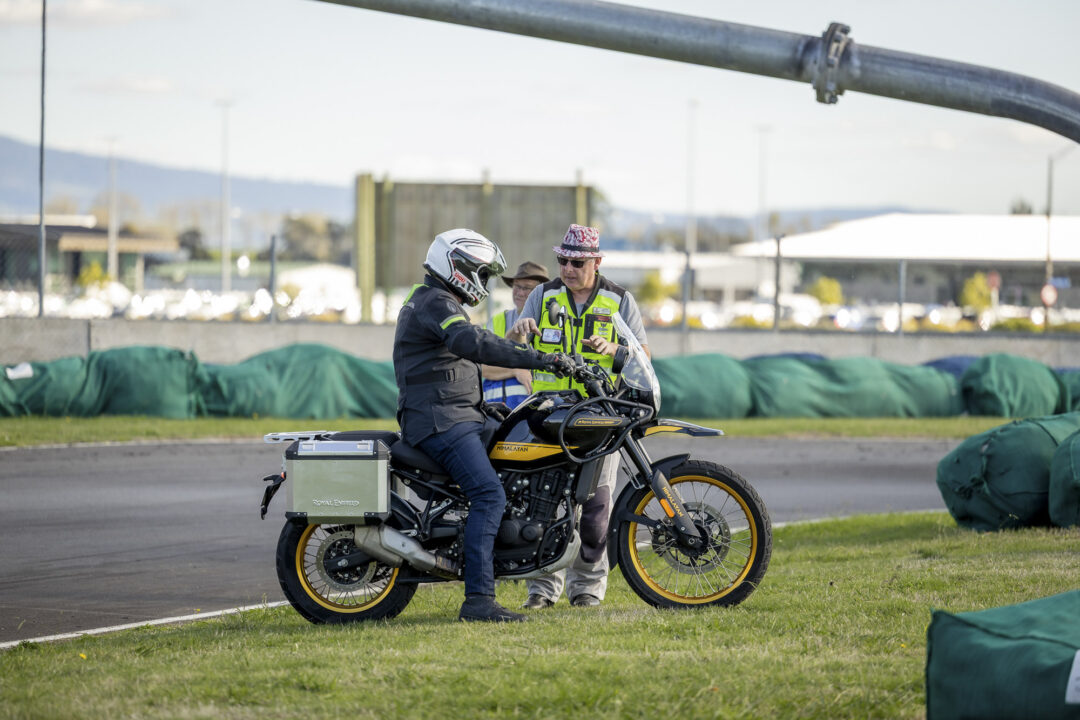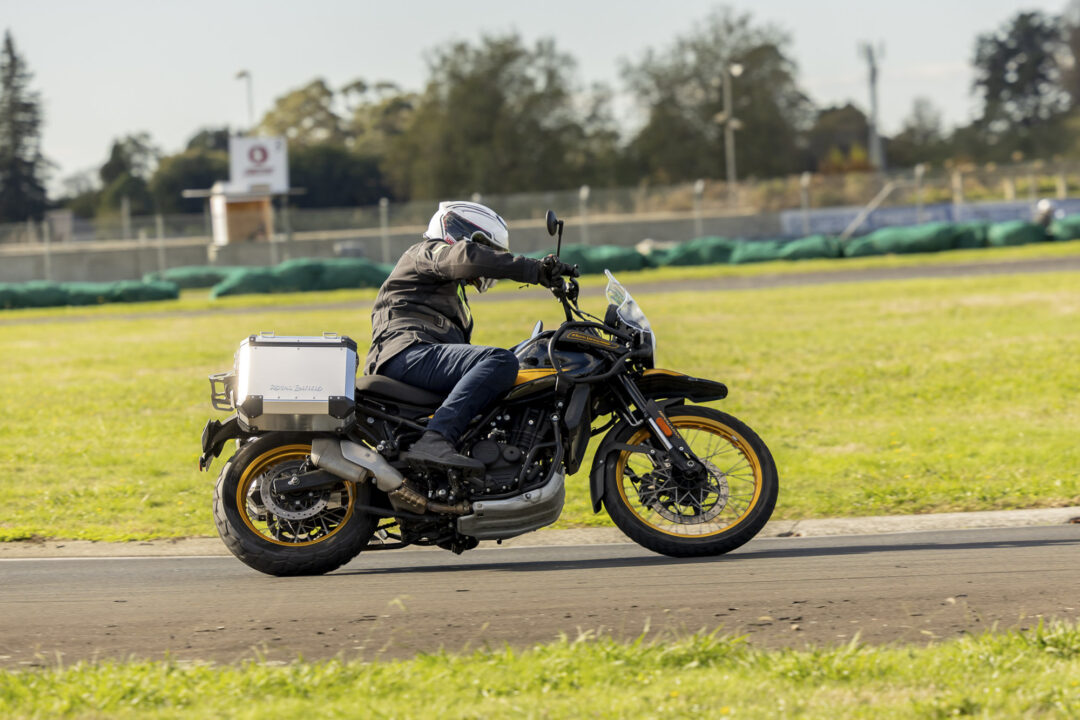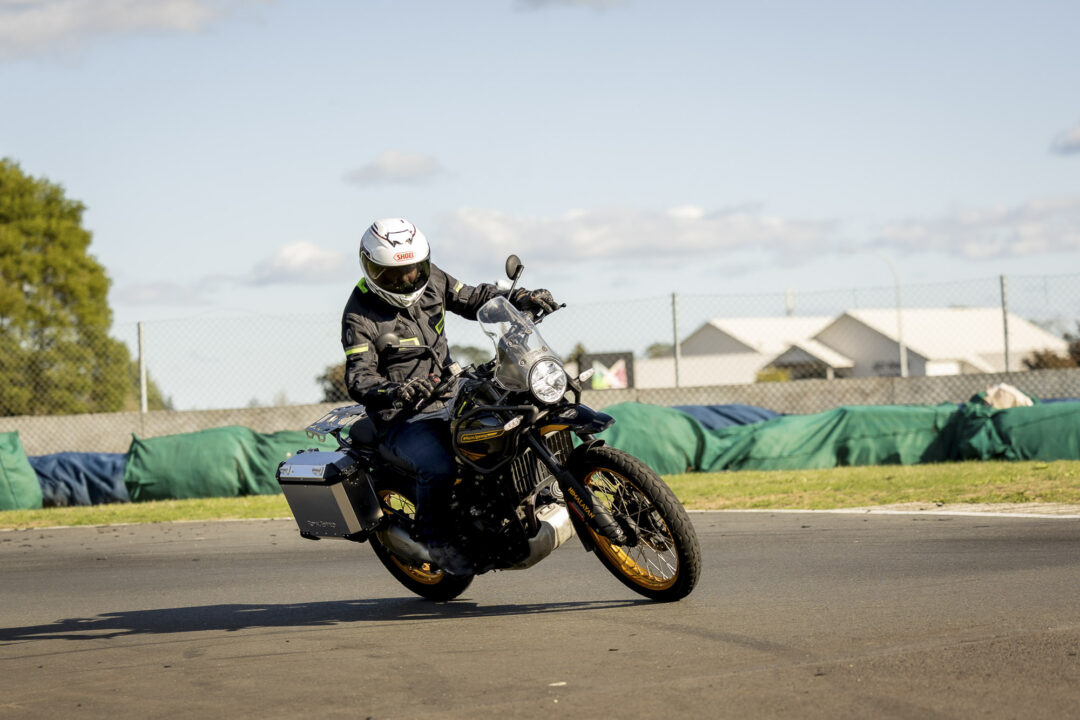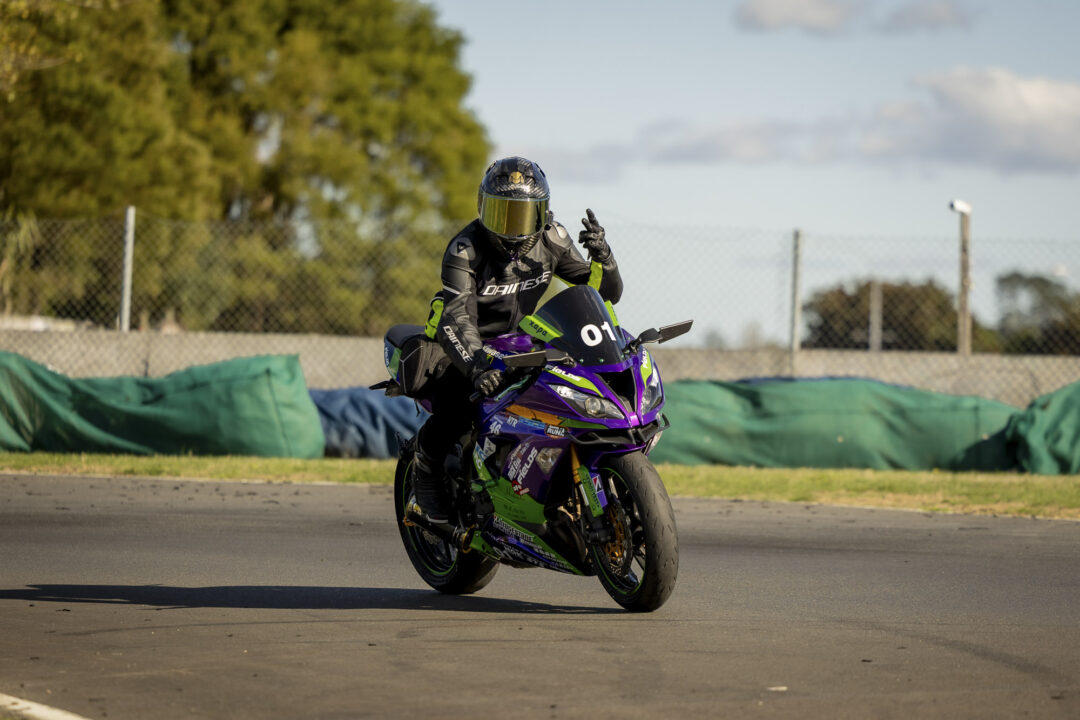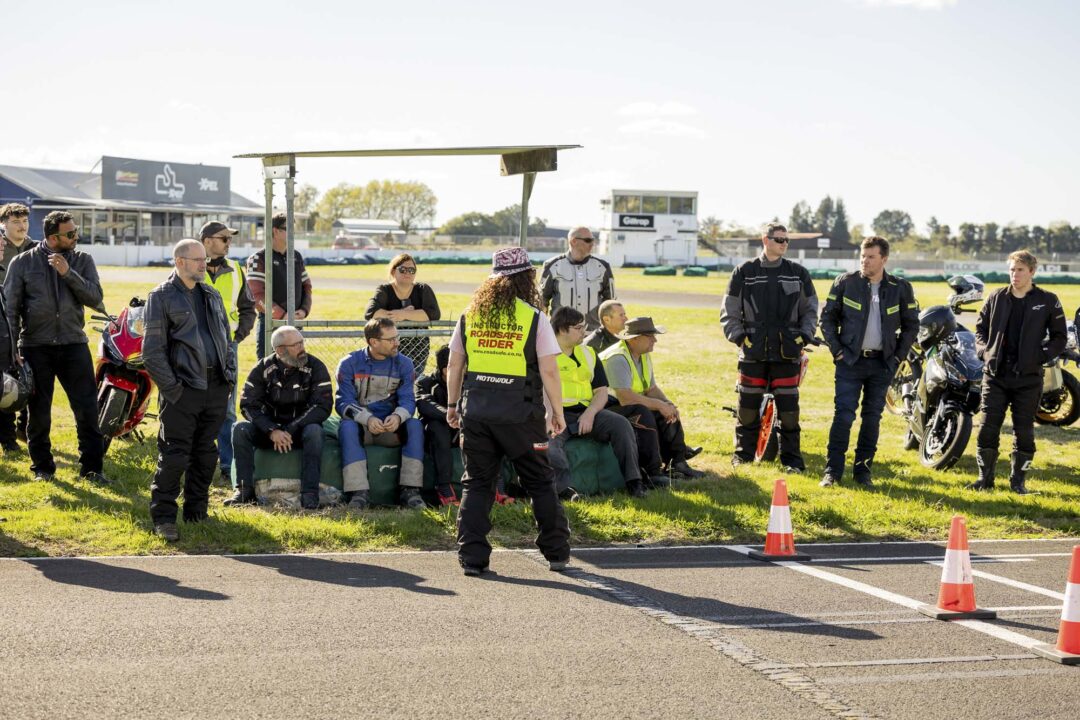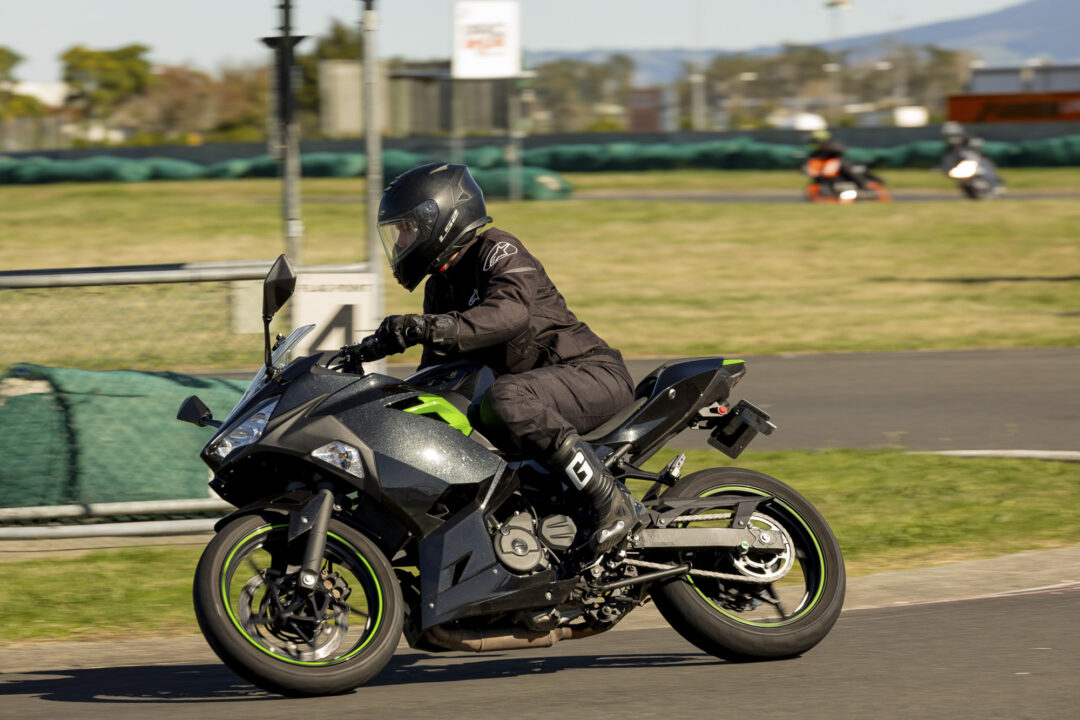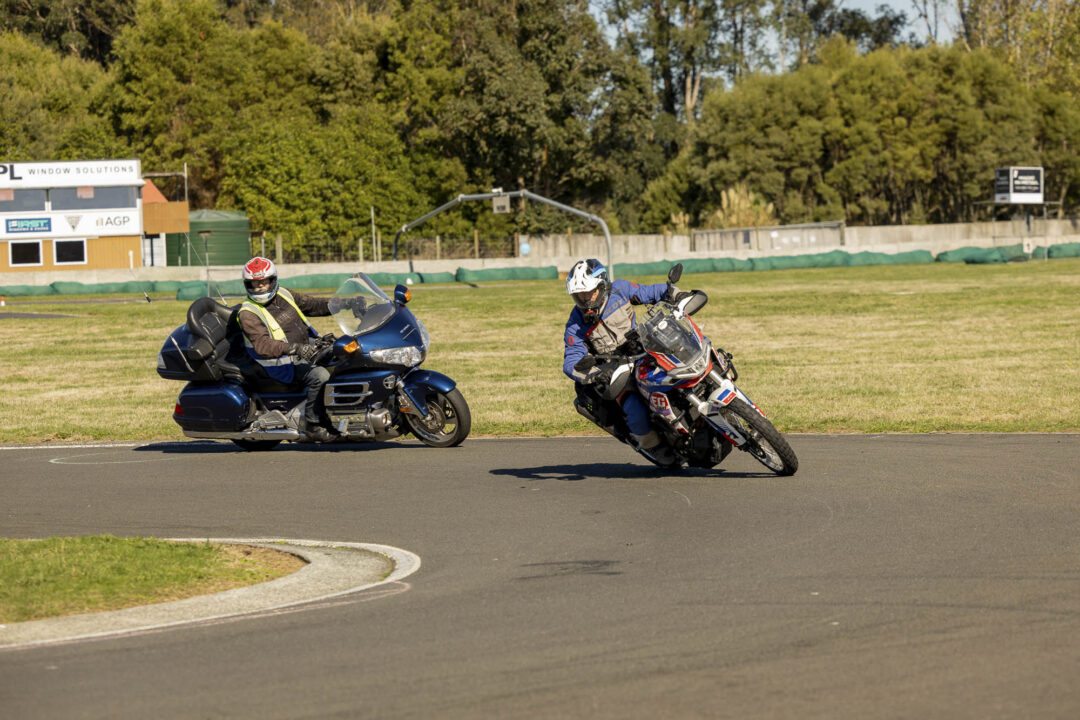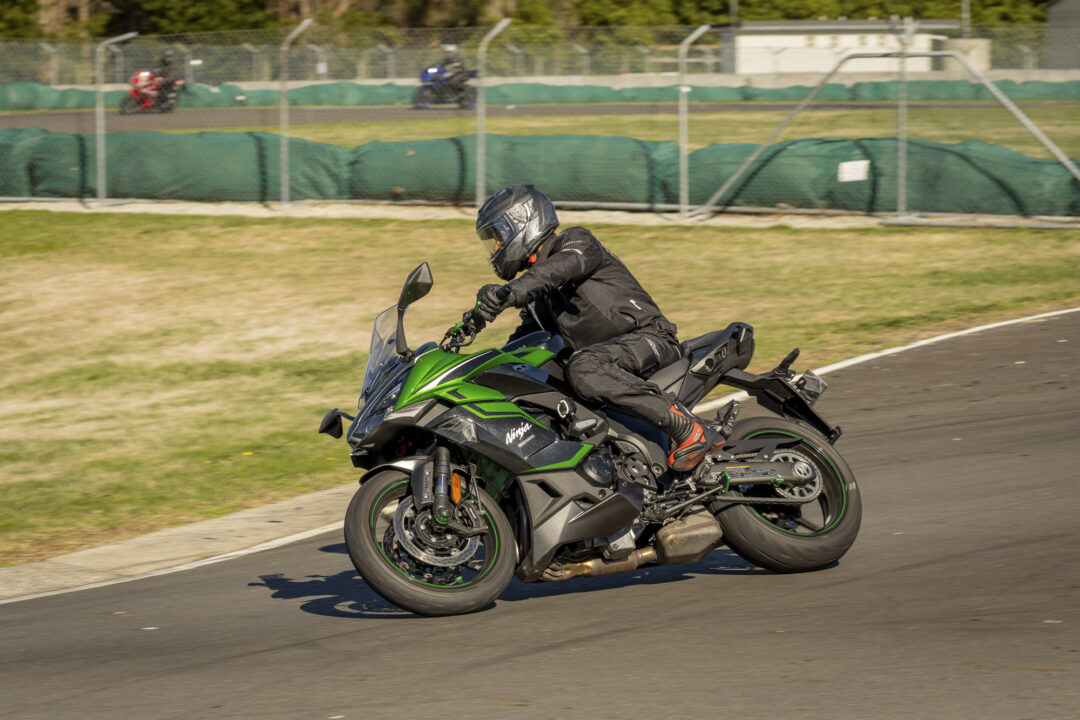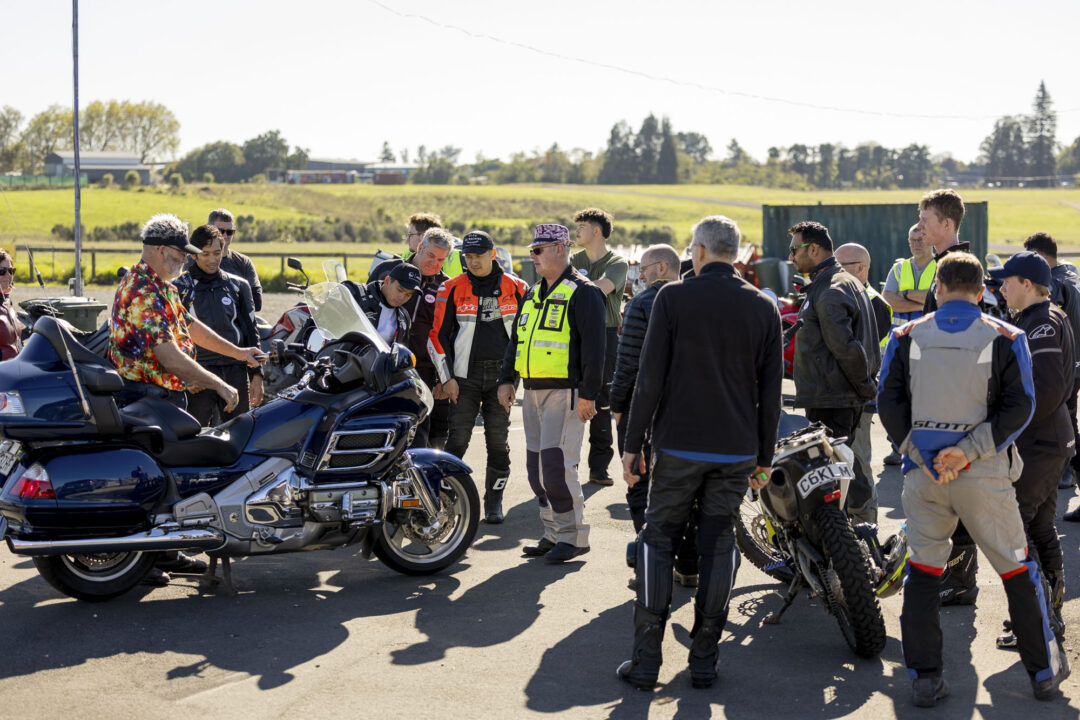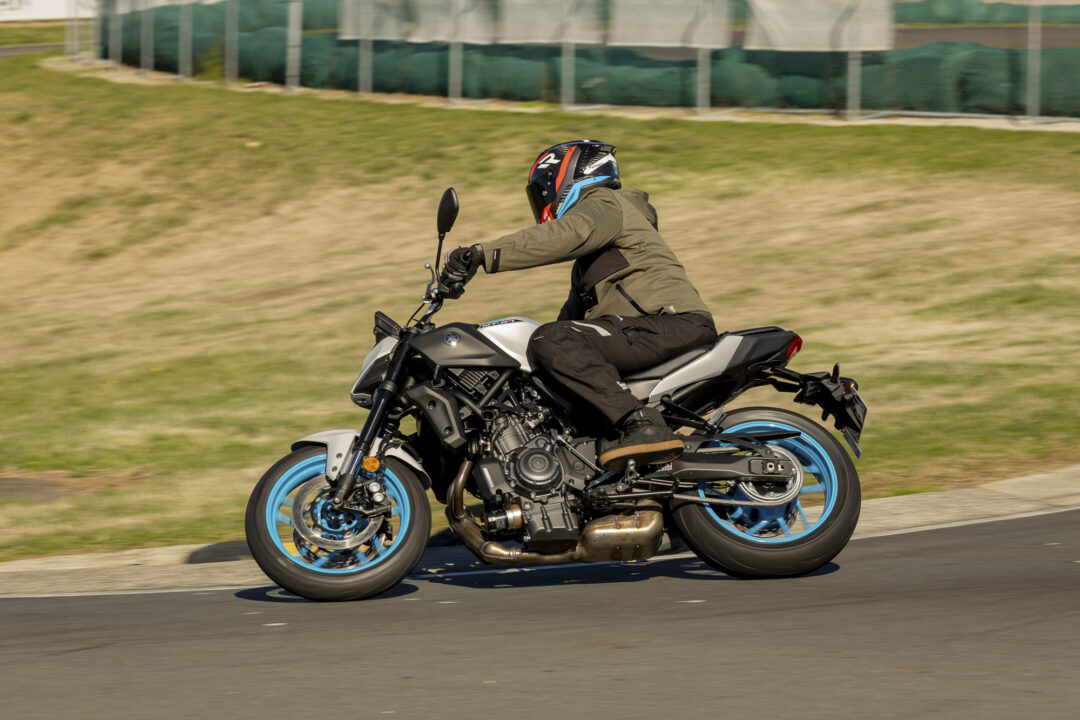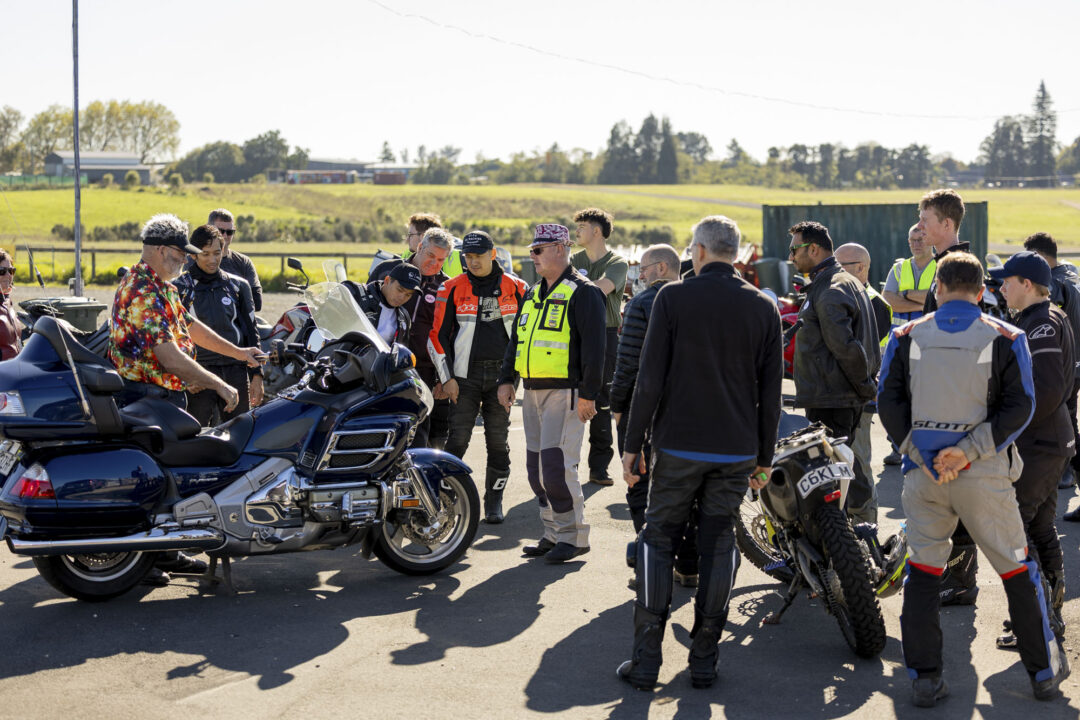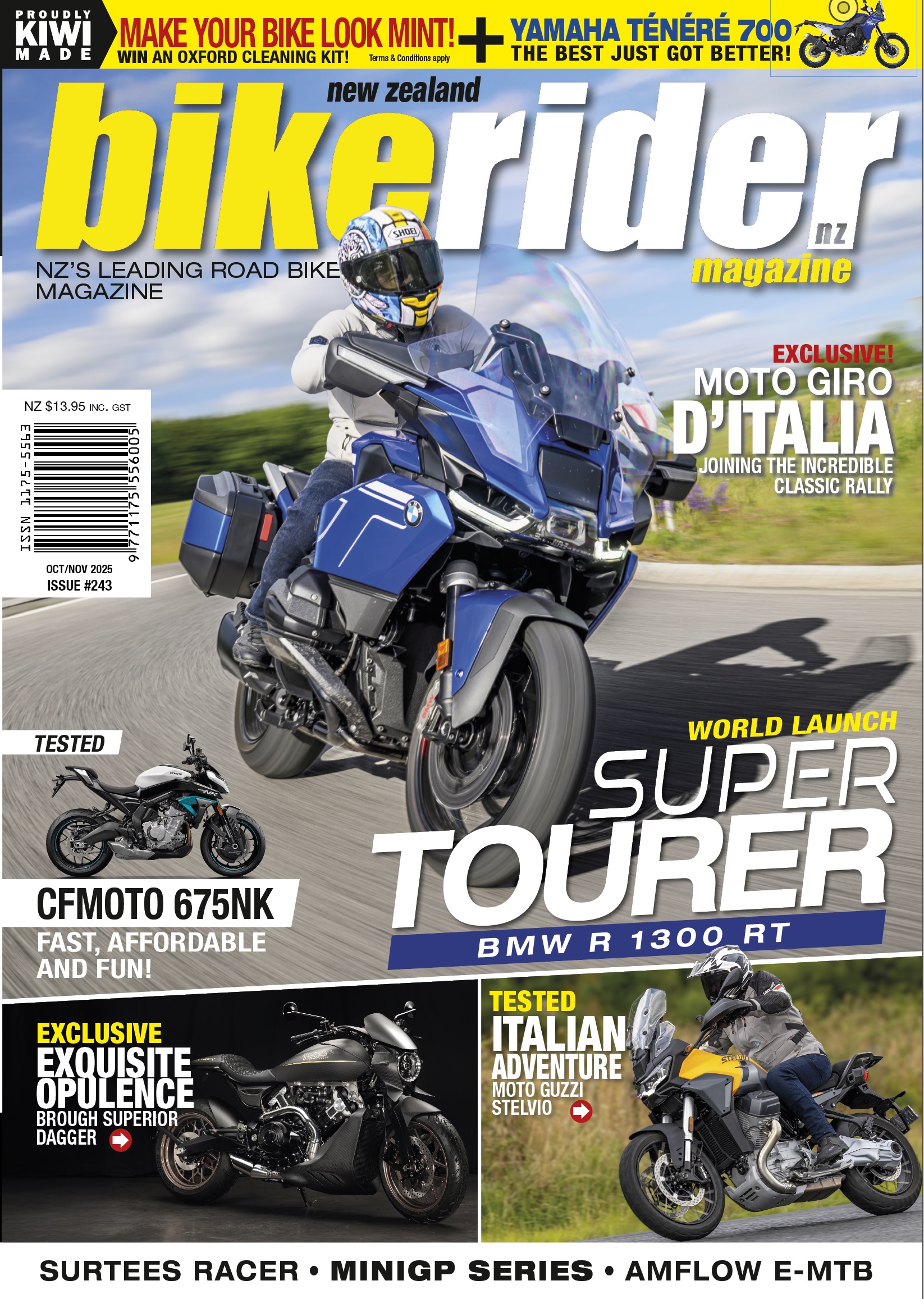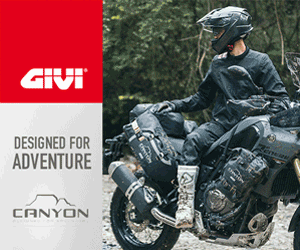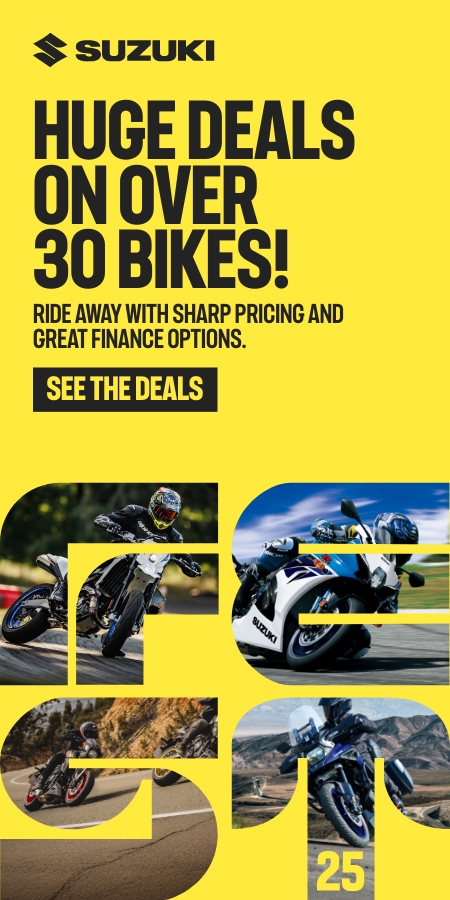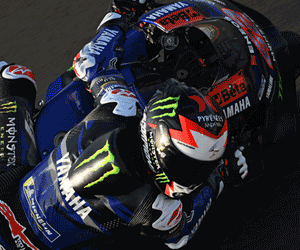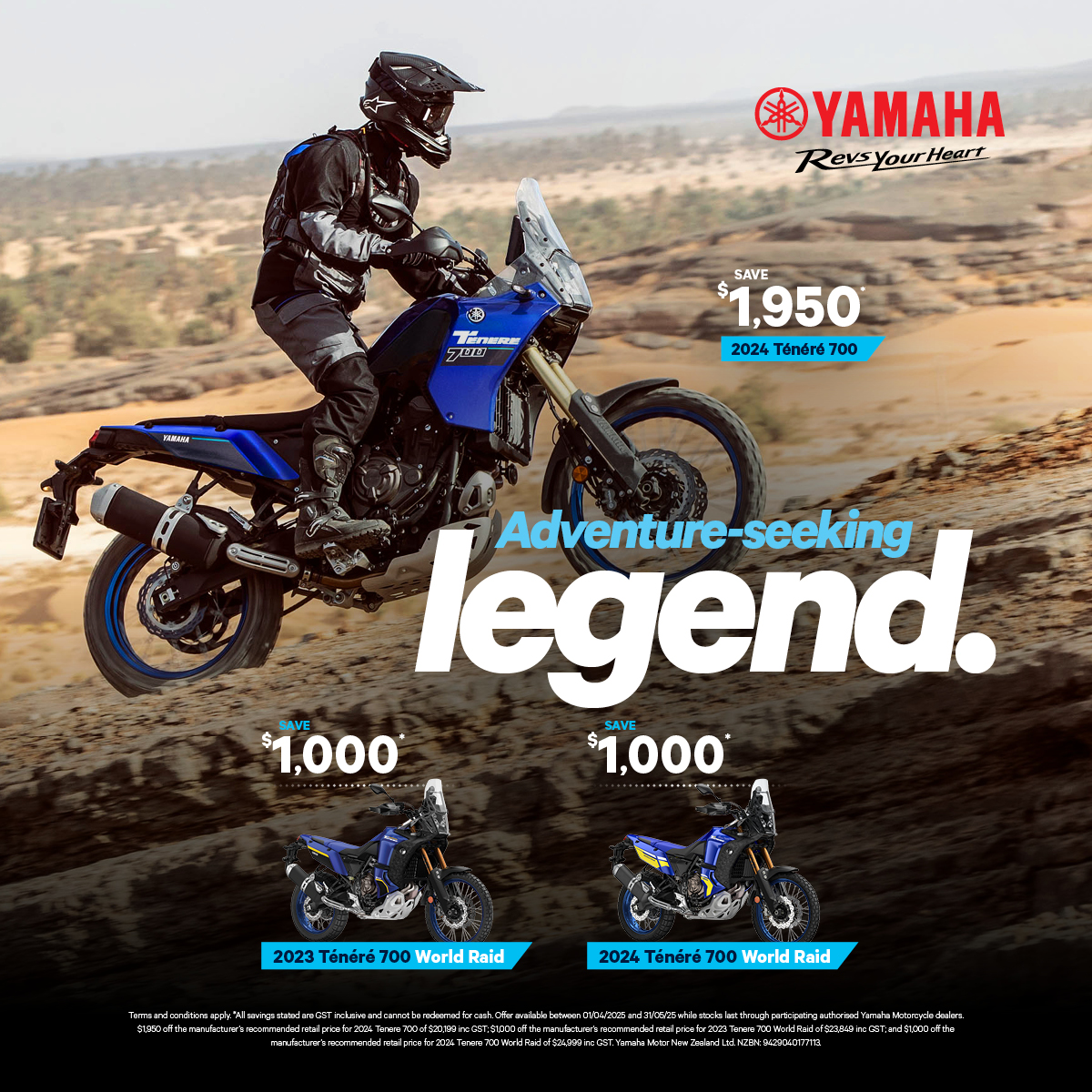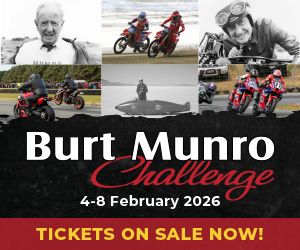- Course subsidised by three local councils – Waipa District Council, Waikato District Council and Hamilton City Council.
- Roadsafe Rider team of Andrew and Lynne Templeton are Wellington-based and pride themselves in their ability to consistently deliver top quality, high value courses.
- Location of the Hamilton Go-Kart track offers a safe environment to ride with excellent classroom facilities.
Andrew and Lynne Templeton come to the Waikato every year to train motorcyclists in a rather unusual location, the Hamilton Go-Kart track. Team BRM headed along to gain some knowledge and cut some laps.
Words: Paul Pics: Two Creative Photography
While the Ride Forever courses are excellent, with the Bronze, Silver and Gold levels focusing on differing skills and techniques, there’s only so much they can fit into the time and the curriculum. That’s why the team from Road Safe put on these additional training days where they can fit in other areas of training and technique not part of Ride Forever, while also doing it in the safe and controlled environment of the Kart track. And the fact the Hamilton track is also one of the sweetest little strips of twisting tarmac you’re likely to find this side of Hampton Downs (just on a smaller scale), also makes it an enjoyable experience for all those attending.
One of the unique aspects of this course is that it’s funded by a group of local councils, with the Waipa District Council, Waikato District Council and Hamilton City Council pooling resources so that the course can be offered to riders for free. Yep, you can use your spare cash to stick in the tank while learning some really useful tips from Andrew, Lynne and their team of helpers, with the councils investing in a safety program that will hopefully reduce accidents in the area.
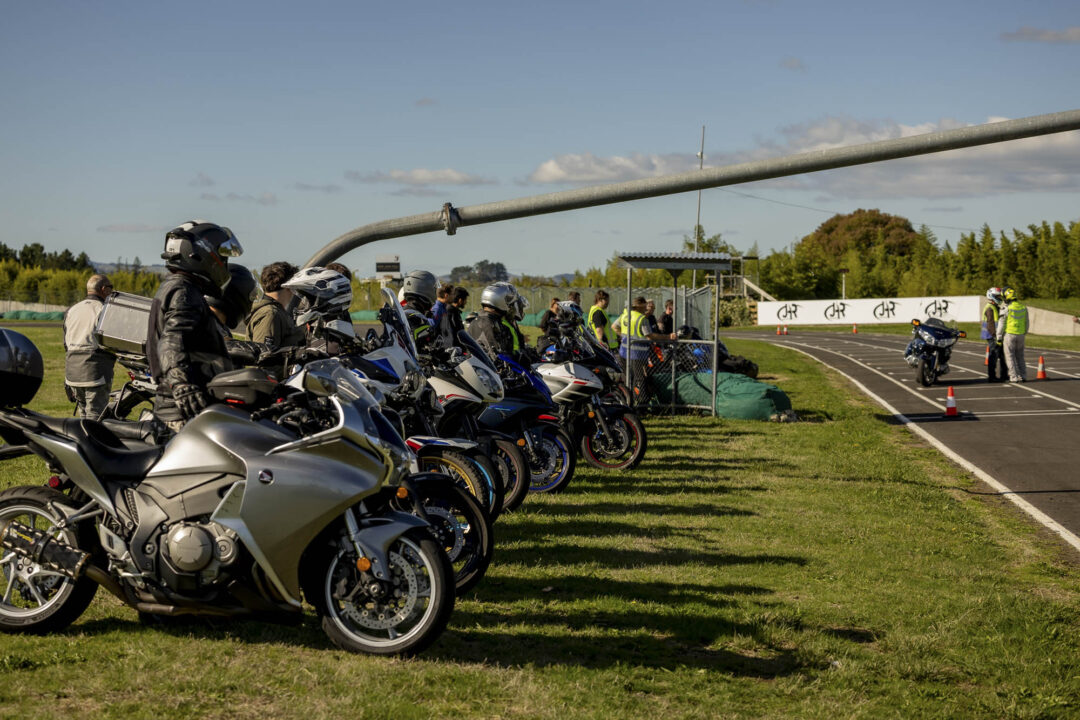
The Set-Up
With a decent clubroom, the course was split into two segments: a classroom session and practice on the track. Andrew’s course uses elements of the UK Police motorcycling handbook that was the foundation of the IAM (Institute of Advanced Motorcyclists) training program. Yet, Andrew puts his own (often humorous) spin on the information he’s conveying to the riders in the room, with a mix of other messages and techniques that he’s picked up over the years of training motorcyclists. One thing he’s very quick to point out is that not everything you see on YouTube is true, something that many motorcyclists, DIY’ers and others who think the free video service is the perfect place to gain knowledge. Honestly, it’s better to hear it from the professionals than from someone in their bedroom who is simply trying to gain more views and likes…
The course was split over two days, with the Saturday sessions designed for new or less confident riders, while Sunday was for more experienced or returning riders. We joined the crew on Sunday, with me on the BRM Royal Enfield Himalayan and Taine on a Yamaha MT-07LAMS.
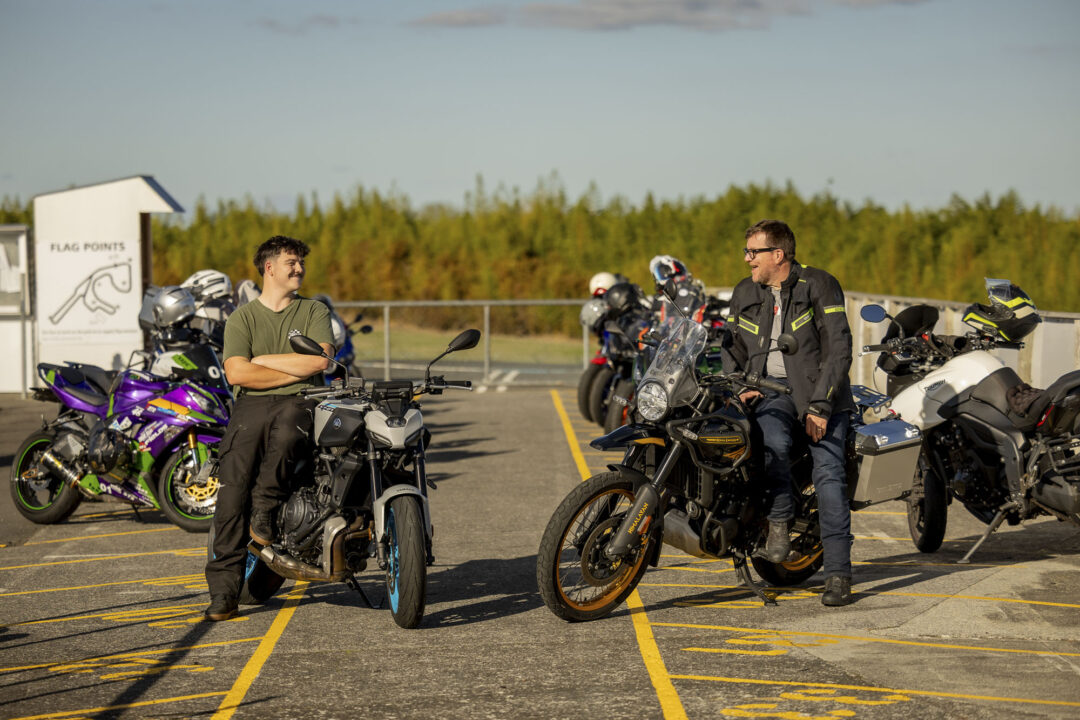
“Motorcyclists need to take accountability for their riding.”
After introductions, the morning was spent with some robust discussions between Andrew and the assembled riders about common issues and mistakes. Andrew has a comprehensive knowledge of statistics, and we discussed the top 3 reasons for crashes on motorcycles.
They are:
3 Distractions.
2 Corners.
1 Built-up areas involving another vehicle.
This is where the statement that ‘Motorcyclists need to take accountability for our riding, more than all other road users,’ comes in. Do that, and quite simply, you will ride longer. Don’t do it while also expecting every other road user to be on the lookout for you, and you’ll likely have a very short riding career.
The beginning of the training started with getting the techniques correct on the bike, with everyone in our class aware of counter-steering (pushing the inside handlebar to get a bike to turn), but weren’t so sure when asked what happens if you close the throttle mid-turn. Well, the wheels slow as the bike is losing drive, which in turn causes the bike to lean in more, so that’s why we need a constant (or slightly positive) throttle mid-turn to keep the bike steady and the cornering constant. And the counter-steer input to get us there needs to be a push then releases, so we’re not carrying cornering pressure mid-turn, instead using our weight through the peg to keep the bike steady.
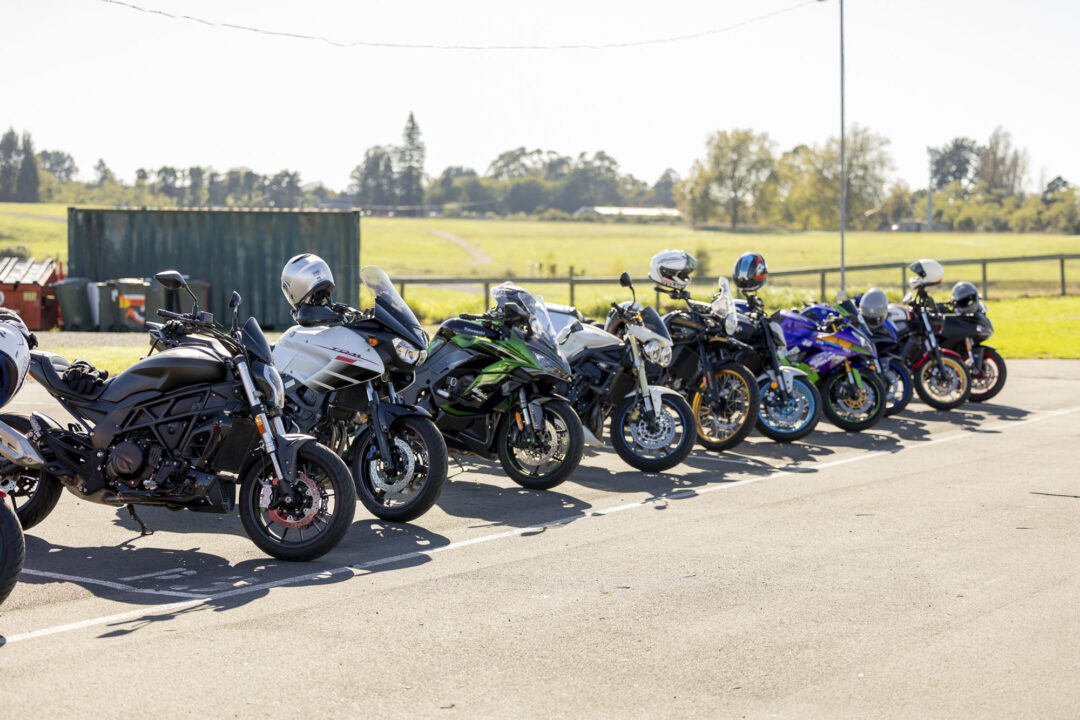
Next up was an interesting demonstration on Saccades (ironically, using a YouTube video from motorcycle blogger, Fortnine). The concept of Saccades is that our brain fills in the gaps when we move our eyes quickly, often filling the blurry bits in with made-up content if it’s somewhere we are familiar with. That’s part of the reason many accidents happen close to home, as our brain fills in lots of spots with memories rather than what’s actually there.
Think of a driver pulling up to an intersection and looking quickly left and right. If you try it, you don’t really see anything during the head movement as your eyes are taking occasional snapshots during the sweep. And if you’re a motorcyclist in the middle of that sweep, you’re not going to be seen. Heck, you could be a truck and trailer and still be invisible.
That’s why you can ride towards an intersection with a driver looking at you, yet they still pull out. Their brain is adding info that’s not really there, and it happens to all of us.
As a driver (or rider), the solution is to slow the sweep of the head down and actually stop and look. As a rider approaching an intersection, your yellow jacket isn’t even going to help. You need to weave from side to side or sound your horn, forcing the driver’s brain to recognise there’s something different.
Out on the track, the group got to practice some slalom through a series of cones on the kart track’s back straight, while chaperone riders followed everyone around and pulled us in for a chat to discuss lines. A bit of chalk added to our tyres before we headed out and then to a couple of corners while we were out was used to demonstrate how far we’d been leaning over while riding on the circuit, while the directions on the track were to encourage riders to go in to turns slower and deeper while looking for the vanishing point to open up. It was a good session for many, especially when they got back to the pits and discovered they’d wiped all the chalk off their tyres by leaning the bike over further than they expected.
Tyres and Technique
Bikes make up 3.2% of the roading population in New Zealand, so it’s an unfortunate fact that motorcyclists don’t get much consideration when NZTA are making decisions. So we need to rely on our own skills to keep safe. The fact that the second biggest cause of motorcycle accidents in NZ is bikers simply not making it around a corner shows a lack of skill and also a lack of faith in what a motorcycle with modern tyres can do.
The human brain inherently gets anxious when we lean over 20 degrees, as that’s when we’ll generally fall over, so we’re fighting thousands of years of evolution when we ask our bikes to lean any further. The fact is, with the technology from MotoGP and WSBK tyres filtering down to consumer tyre technology at a rapid pace, the tyres we are able to buy and fit to our bikes nowadays are simply stunning. So, if you are an aware rider that hasn’t entered a corner at an impossible speed to make it around, have the correct tyres fitted to your bike to suit the machine and the conditions, and know what to do to keep the bike stable when leant over, there shouldn’t be a problem making it out the other side even if you think you’ve gone in a bit hot.
Back on the track, and the team got us moving our body slightly to add lean-angle while getting our braking and road position sorted well before the sharpest turn on the track. With marks in chalk on the floor of where to tip in and where to look while you’re heading around the corner chasing the vanishing point, it wasn’t long before many riders were happily cranked over, using positive throttle in a smooth manner as they watched the corner open up. It was a pretty major improvement across the riders.
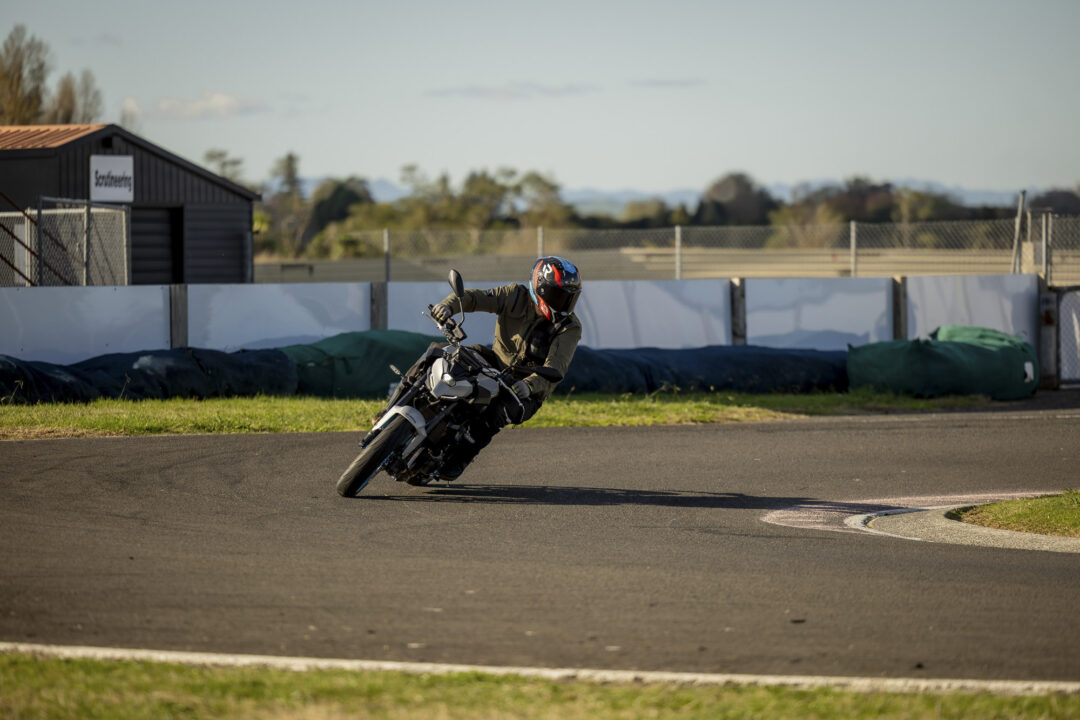
“You can bullshit, but you can’t bullshit your riding.”
There’s always the guy spouting off somewhere (the bike shop, the pub, online) about how great they are on two wheels. But, when the rubber hits the road and you’re out on the bike, there’s no hiding whether you’re a competent rider who knows what they’re doing, or someone who has no idea other than grabbing a handful of throttle (or brake) when the bike is vertical.
The next classroom visit looked at braking, with a great video explaining the correct procedure to obtain maximum grip to provide maximum stopping performance. It’s easy nowadays with ABS systems to think that you simply need to grab a handful of front brake. But if you haven’t loaded the front tyre and compressed the suspension first, you could find the anti-lock system kicking in much earlier than if you’re preloaded. The technique is to pull the lever progressively at first before getting to maximum brake pressure, while bringing in the rear brake and also changing down gears, all of which help to reduce the speed of the bike faster in an emergency situation.
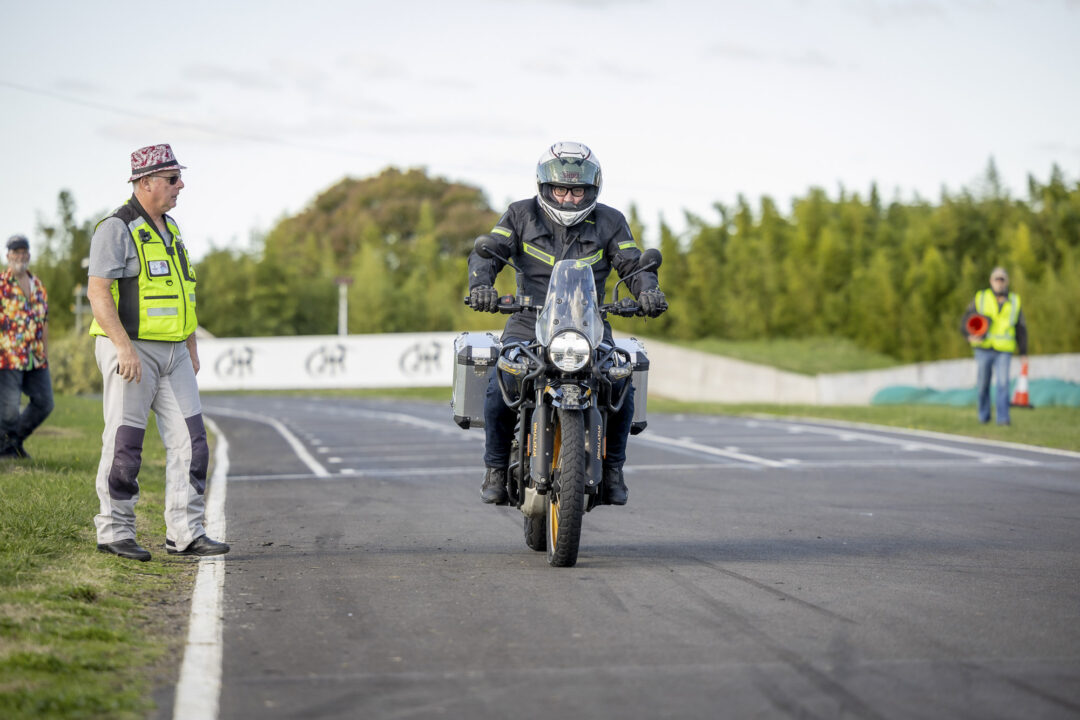
Another track session saw the riders go through cones before hitting the anchors, firstly just with the rear, followed by just the front and then eventually with both. And we had Andrew and Lynne at the end of our emergency stop critiquing our technique, with keeping your eyes up at the horizon the hardest part of the process for me to master. With all your concentration going on the front wheel, it’s so hard not to look directly in front of the bike, whereas your attention is better spent looking at the object you’re trying not to hit and, if you’re not going to stop in time, steering around it. Oh, and you also need to keep an eye on what’s behind, so being able to stop just as you’re slotting the bike into first gear also means you’re primed and ready to take off should you need to make a quick exit!
And being smooth and progressive with your inputs transfers to the rest of your ride, where getting on the throttle coming out of a turn needs to build in a linear fashion, which gives the time for the rear shock and tyre to take the load, offering maximum grip as the power increases. Again, snap the throttle round and you’re much more likely to overwhelm the grip available from the rear, which can be a really bad thing to do if you’re still leaning over.
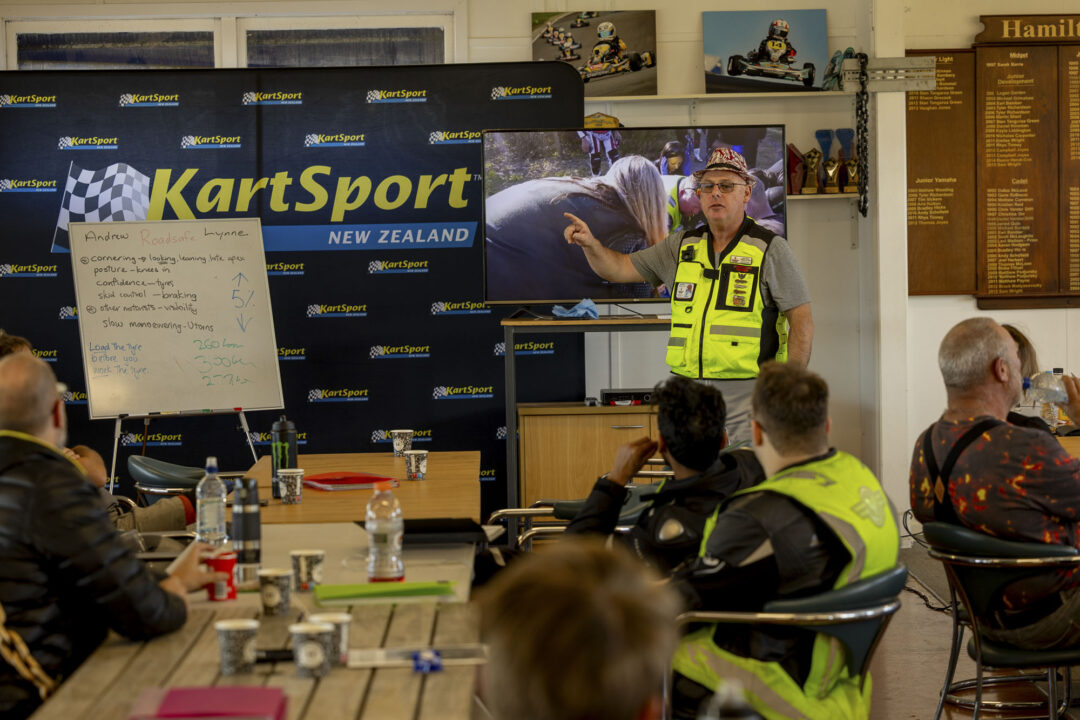
Varied Attendees, Visible Progress
When you think of motorcycle training initiatives, it’s easy to think that it will be the domain of older dudes in fluoro riding gear. And, to be honest, there was a bit of that floating around. But, BRM’s youngest tester took loads out of the day, as did a number of younger young fellas riding sportsbikes that were adorned with every imaginable piece of ‘bling’. And I’m sure that the tuition they received on this day will improve their bike’s performance much more than any of the aftermarket accessories they’d dropped their hard-earned on. And the training was FREE!
If you’ve not done a Ride Forever course, go and give one a go. Do it in winter and get some really great tips not only on riding in general, but also in mixed conditions. With a bit more knowledge, many riders might appreciate that it’s still fun to ride a bike out of the summer months rather than tuck it away in the shed with the rego on hold.
Andrew and Lynne’s training expands on topics that Ride Forever doesn’t cover, so if you get the chance, it’s worth coming and giving it a go. They do them around the country, although the Go-Kart track for the Hamilton schools is a bit unique.
With my Himalayan having only 40hp and the LAMS MT-07 not much more, it also showed you can have just as much fun (if not more) on smaller capacity machines, as we were both smiling behind our visors while cutting laps. It’s not what you’ve got, it’s how you use it, the old saying goes. And with a day’s tuition from Andrew and the team, the using it bit got a definite upgrade.
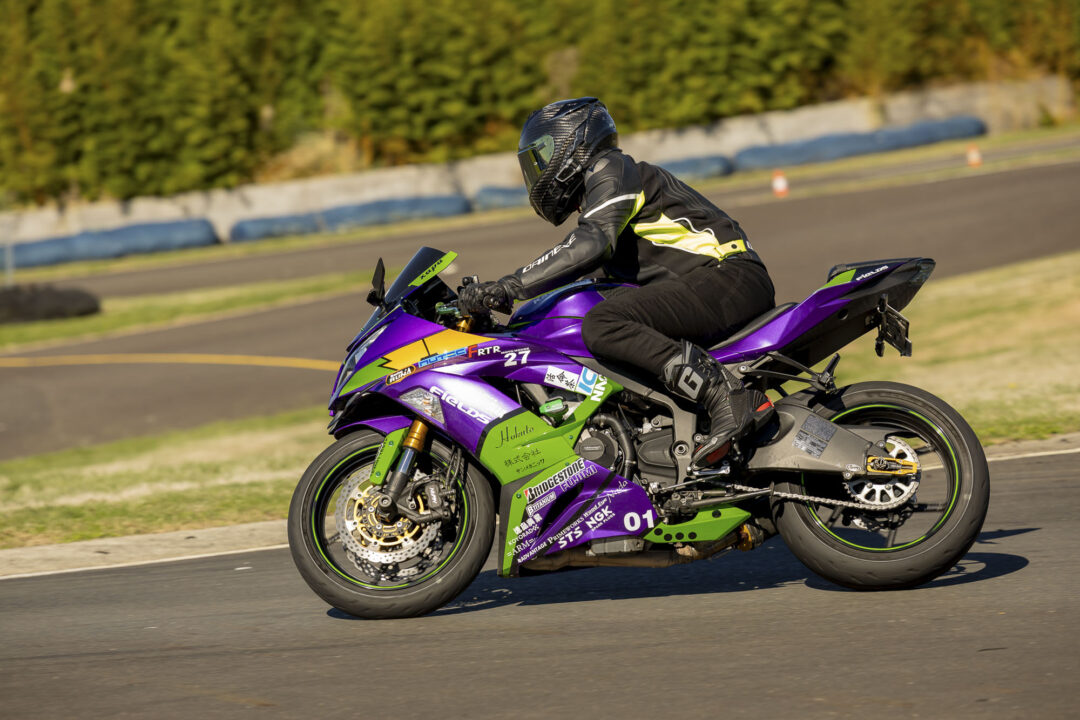
Book A Course
If you like the idea of this sort of training, then head HERE to see when Andrew and the team will be back in the Tron. And if you’re not in this area, well, they run training in various other parts of the country so still check it out. The fact that for the Hamilton training days the funding comes from three proactive local councils (shout out to the Waipa District Council, Waikato District Council and Hamilton City Council) is great, as it means the course literally costs riders nothing. Yet the knowledge gained will undoubtedly make the attendees better and safer riders which, for the councils, will hopefully mean a reduction in crashes in their districts.
If you are looking for an alternative to the Ride Forever courses, then this course from the Roadsafe Rider team is a great option. The kart track is a blast to ride on (and you won’t be able to ride here any other time), while the tuition goes into topics that aren’t a part of the Bronze, Silver or Gold courses.

